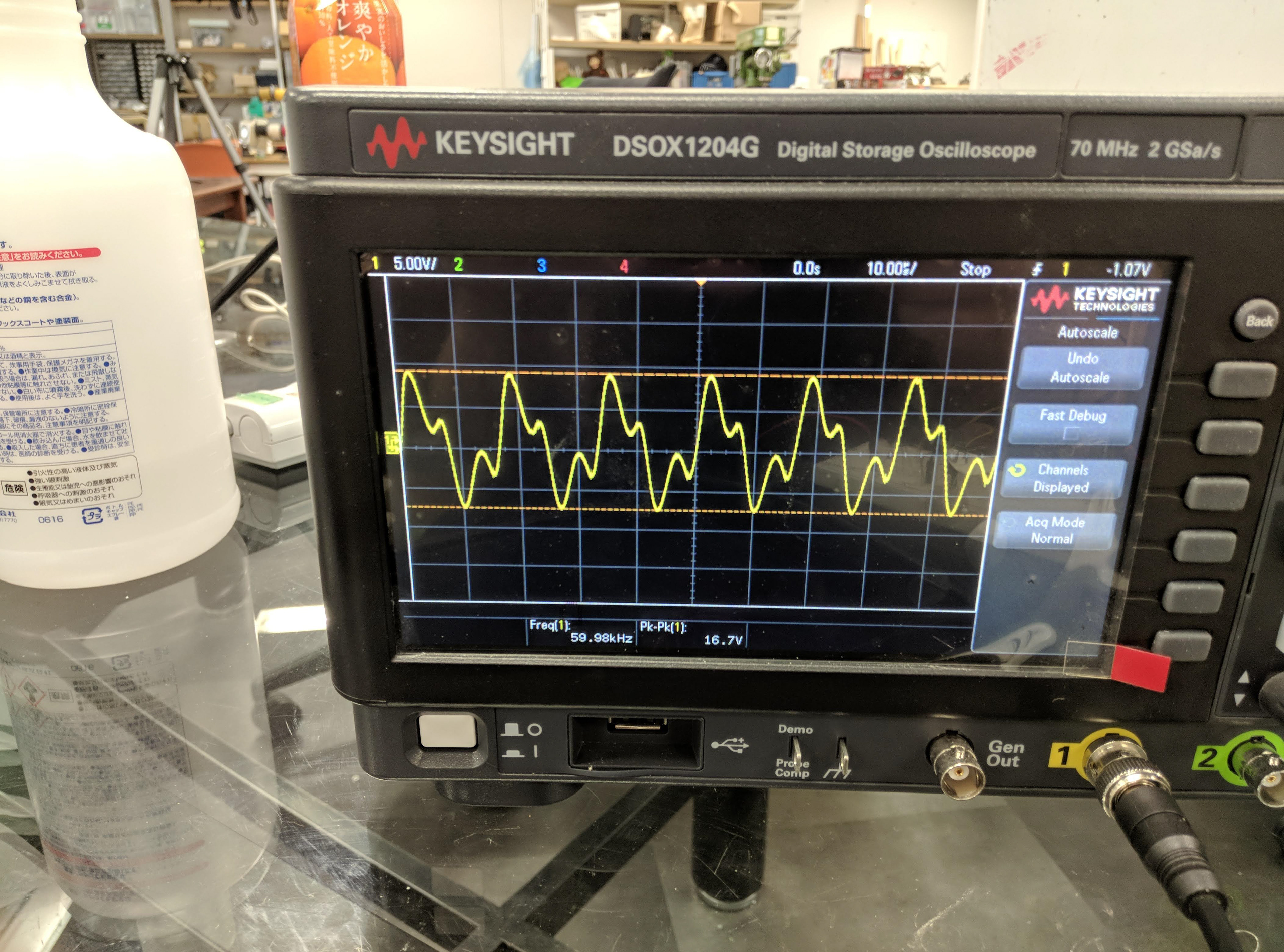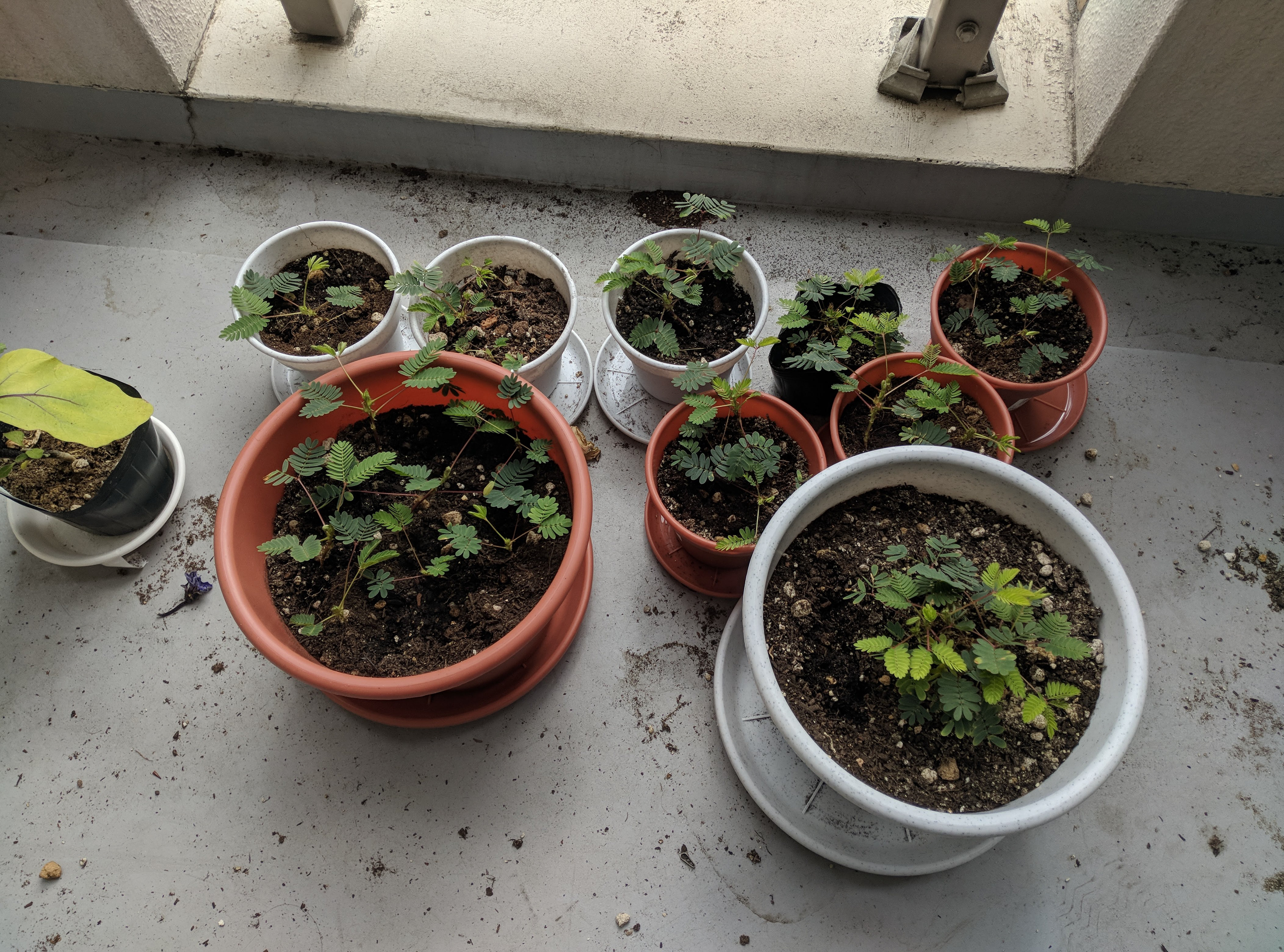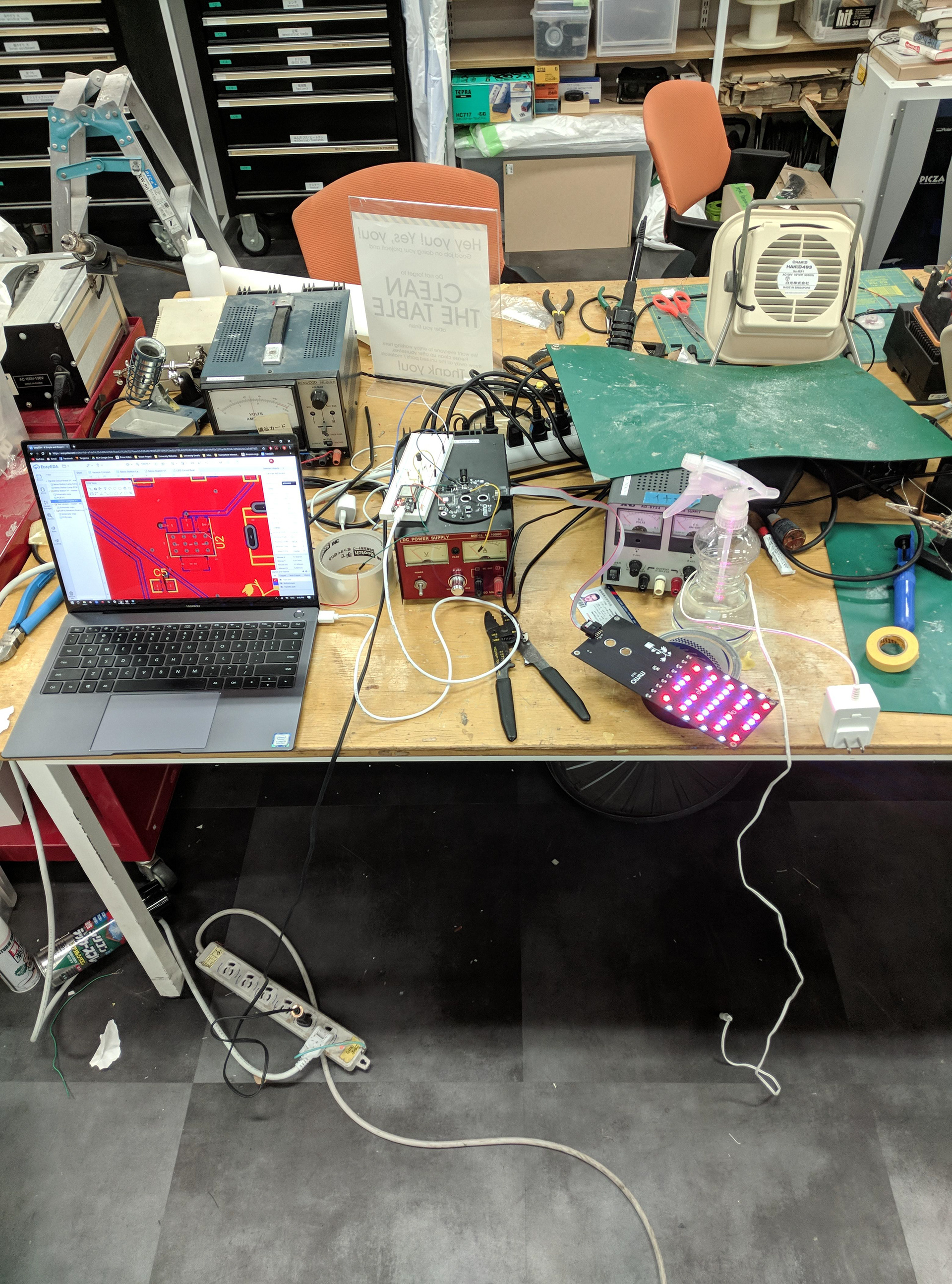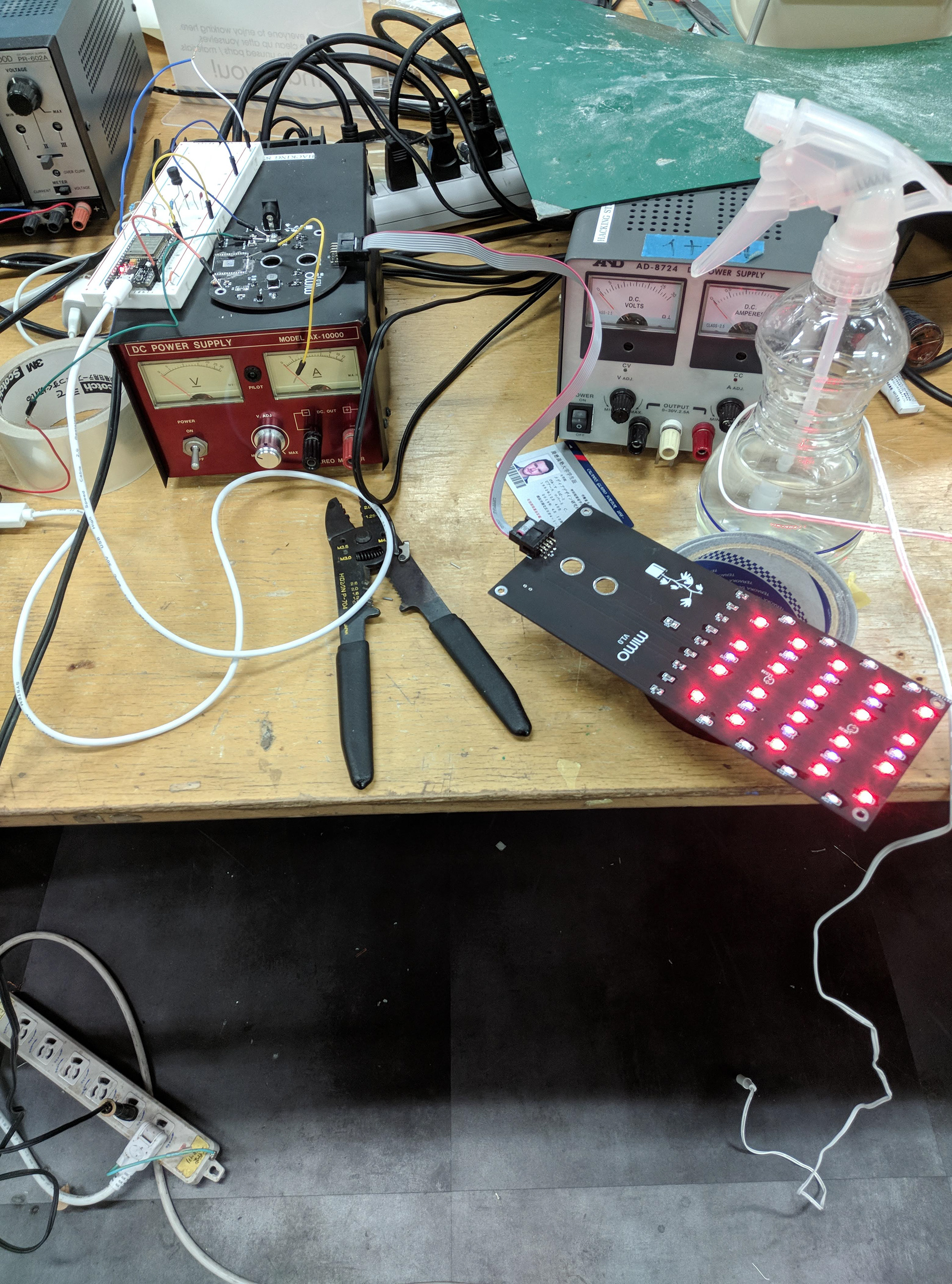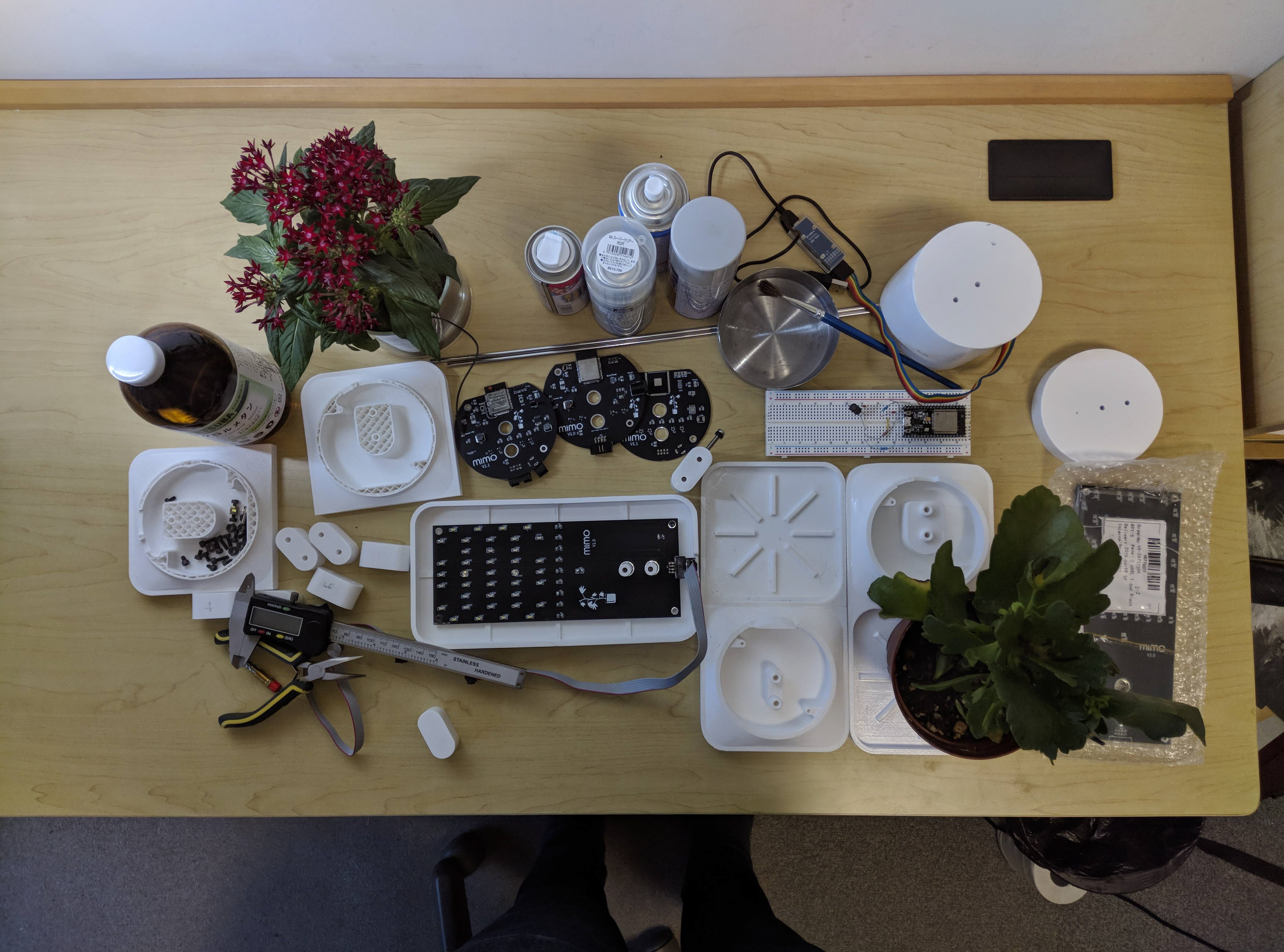Mimo is an internet connected interface made from a touch-sensitive mimosa pudica plant that can control other smart devices in an exciting and playful new way.
Team & Support
Solo project with key support from Dr. Yamen Saraiji (Keio University, Tokyo)
Background
As the connected devices around us multiply and become ubiquitous, a new challenge is arising: how do we engage with this explosion of new interfaces? Increasingly, the choke point in Human Computer Interaction (HCI) is the human instead of the machine. The typical way to address this challenge has been to move interfaces into the background by making our devices more passive, predictive, and self-sustaining. However, there is another, complimentary path. Instead of just reducing interactions, what if we make them more fun, exciting, and enriching? Mimo, named after the touch responsive mimosa pudica plant, is a response to the hundreds of mundane and utilitarian interactions that we have with technology everyday.
When touched, mimosa pudica plants respond by instantly drooping the affected leaf and folding its leaflets together. Mimo harnesses this natural feedback mechanism by recognizing touches and using them to control internet connected devices. For example, by playing or pausing music, or turning on and off smart lights. This action provides us with an exciting and fascinating way to reengage with everyday interactions, and encourages us to rethink the role of technology and nature in the human ecosystem.
Medium
The prototype device is made primarily with PLA parts, smoothed and solvent welded with dichloromethane. The electronics are mounted on two fully custom printed circuit boards (one for the custom grow light, and one to host an embedded ESP32 controller). The device connects with IFTTT, which acts as an intermediary that allows Mimo to be connected to almost all smart devices including music players, smart plugs, and smart lights.
Embodiment
The device comprises a living mimosa pudica plant, which, when touched, is detected by a controller by using swept frequency capacitive sensing. The controller samples at 190 different frequencies and constructs a profile of the capacitance of the plant between 60kHz and 250kHz. The controller interprets changes to this capacitive profile as a touch, enabling the device to differentiate whether the plant is folding up due to a human touch, or some other stimuli.
The custom, height adjustable grow light comprises four different colours of LED lights mounted on a custom circuit board. The four colours of light are white, blue, red, and far red, which can be controlled by a companion app. White light gives the plant a more natural look, while red, far red, and blue LEDs provide light across key bands in the light spectrum for optimal plant growth.
The far red light has another, special, role to play. Normally, a mimosa pudica will fold its leaves in dark conditions, in what is referred to as a 'nyctinastic response'. This response would normally make Mimo untenable in a home environment, where lights are constantly turning on and off. To counteract this, the device detects when the lights in the room are turned off, and briefly illuminates the mimosa pudica in far red light. This process creates a chemical change in the plant's phytochromes, causing the leaves to stay open, even after the far red light is turned off a few seconds later. In this state, the plant remains responsive to touch.
Mimo knows when you touch by detecting the change in electrical capacitance of the plant using a probe embedded in the soil. However, unlike regular capacitive touch sensing, like the kind used in a touch screen, Mimo samples at 190 different frequencies instead of just one! This allows the custom designed electronics in Mimo to very accurately detect when someone touches the plant.
Mimo's electronics comprise two custom designed printed circuit boards that control the device's touch sensing capabilities, lights, and connectivity.
